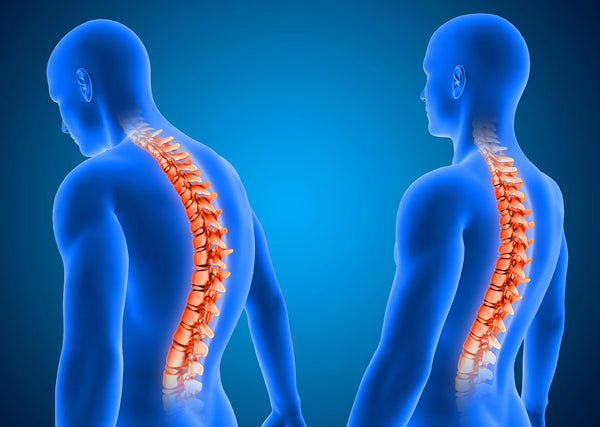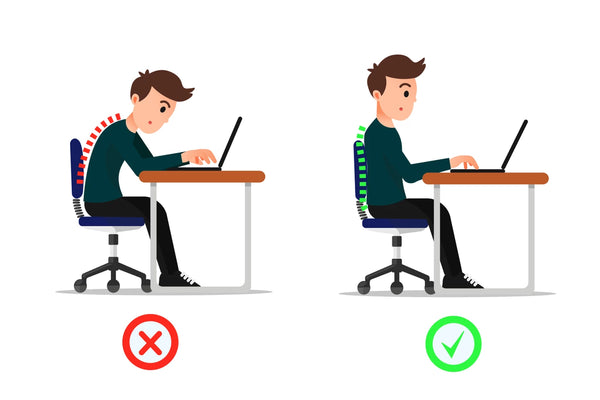A common concern among office workers is that they spend too much time sitting in an improper chair, leading to back, neck, and other health problems over time. The addition of an ergonomic office chair may greatly enhance your posture, minimize back discomfort and eventually boost productivity.
Using an ergonomic chair at work improves your overall well-being. You may have been trying to figure out what makes this chair different from the usual chairs you have been using.
There are, of course, several reasons why workers choose to sit on an ergonomic chair rather than a standard chair. The reasons for this are not too far-fetched when compared to the ease and relaxation provided by the former.

Do all ergonomic chairs have lumbar support?
For you to accommodate the lower back's inward curvature, an ergonomic chair should feature a lumbar adjustment (both height and depth) backrest. The backrest of an ergonomic chair should be between 12 and 19 inches broad. Unfortunately, not all ergonomic chairs have lumbar support so choose carefully.

The lumbar back Support of your office chair is essential. The natural curvature of the lower spine, above the buttocks, points toward the stomach (the lordotic curve). The natural inward bend of the lower back is supported by lumbar back support, which essentially fills in the space between the lumbar spine and the seat.
The lumbar spine and big muscles in the lower back have to work much harder to ensure constant curvature and alignment if there is no lumbar back support. Weak muscles in your lower back might cause you to lean forward to compensate for weakening those muscles in your upper back and head. This can lead to neck and back pain. If you are sitting in an office chair, the natural temptation is to slump or lean forward.

Does lumbar support improve posture?
Improved posture is one of the benefits of lumbar support. Yes, it does when sitting, and it may alleviate pain, but it isn't guaranteed to improve posture long-term. The only way to do this is either a muscle-building program or some neurological reboot (like a chiropractic treatment). Because so much of our posture is influenced by our position, the neck is perhaps the most important factor in poor posture.

Where should your lumbar support be on a chair?
The way you sit may be drastically altered by how your lumbar support is positioned. Your lower back may feel pinched and painful if the mattress is too high. There are a lot of issues that might arise if it is too low, including slouching forward or being pushed backward. Suppose you want to determine what is most comfortable for you. In that case, it is essential to experiment with several various positions for at least 30 minutes before declaring that a certain seat or cushion does not work for you.

-
Fixed Lumbar Support
The term "fixed lumbar" refers to lumbar support that cannot be relocated or adjusted in any manner. They are more likely to be found on lower-end or leather office chairs.
-
Adjustable Lumbar Support
When it comes to adjustable lumbar support, the name says it all. You can manually adjust the lumbar region to accommodate an individual's spinal curvature better. There are various adjustable lumbar support options in today's modern office chairs.
-
Dynamic Lumbar Support
With this form of lumbar support, you may be certain that you will always have the right level of support. Some high-end chairs, including the Herman Miller Embody and X Chair, provide dynamic lumbar support.
-
External Lumbar Support
Many now feature an external lumbar and a head cushion as an affordable alternative to gaming chairs with built-in lumbar support. Additionally, there are separate lumbar pillows that you may use with any office chair.

Should I get a chair with lumbar support?
Sitting in the same posture for long periods may stress your back. To understand that you need a work-friendly chair, consider how many hours a week you spend at your desk? After a long day at work, do your back, shoulders, and neck start to bother you? The chair you use at work may require an upgrade.
You will spend a lot of time on a chair if you work in an office. Forget the workplace; sitting in the same posture for an extended period is bad for your spine, regardless of where you are. Traditional chairs are quite different from ergonomic chairs. When working hard, your body's most important structures might get overworked. This pillow is meant to help alleviate that tension.

Is too much lumbar support bad?
Tension on the muscles, nerves, and blood vessels in the lower back might result from an incorrectly positioned lumbar support. This may lead to a painful pressure point and a lack of blood flow to particular muscles, resulting in discomfort. The lack of support may also injure your lower back.
Should lumbar support be firm or soft?
Slouching is less comfortable in tests than sitting erect on a solid chair. The greatest thing for your back is sitting on a solid chair if you plan to sit for a lengthy time.

What should I look for in an ergonomic chair for a plus-size person?
Ensure your arms and feet are properly supported since you are a plus-size person. The chair's height should also be sufficient to support your whole back. The following are additional considerations to consider while purchasing a chair for your workplace.
-
Comfort
For lengthy periods, a chair must be ergonomic enough to sit on. When sitting for a lengthy period, your spine should be able to relax.
-
Quality
The chair's quality should also be excellent. Wood or any other material must be of the highest quality for a lengthy period. The seat material must be of the highest quality.
-
The Right Size
So that your foot can rest on the floor and your arm may rest comfortably on the armrest, you should adjust the height and breadth of the chair to your height.

Maintaining Back support in an ergonomic chair
Using an ergonomic chair correctly may help you get the most out of your sitting time and keep your posture in check. It is not enough to merely purchase an ergonomic office chair; you must adjust it to the individual's body proportions to increase comfort and lessen the irritation to the spine.
When setting up an office chair, you first need to choose how high you want your desk or workstation to be. The work to be done and the individual's height utilizing the office chair play a major role in this selection. You may need an entirely different style of ergonomic chair depending on the height of the desk or workstation you are using.
APOL Singapore
7030 Ang Mo Kio Avenue 5, #06-53
Northstar@AMK Singapore 569880
+65 6570 0223
Social Accounts:
https://www.facebook.com/APOL.SG/
https://www.linkedin.com/company/apol-singapore-pte-ltd/
https://www.youtube.com/channel/UCpC0pp8xFHufix0CPu\_ewmQ
https://www.instagram.com/apol.sg/


